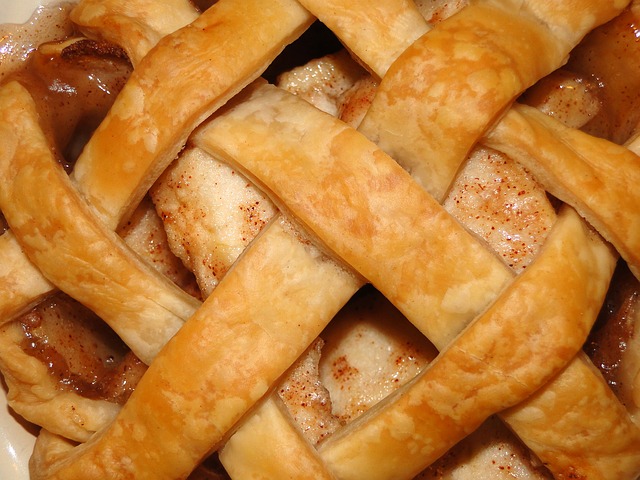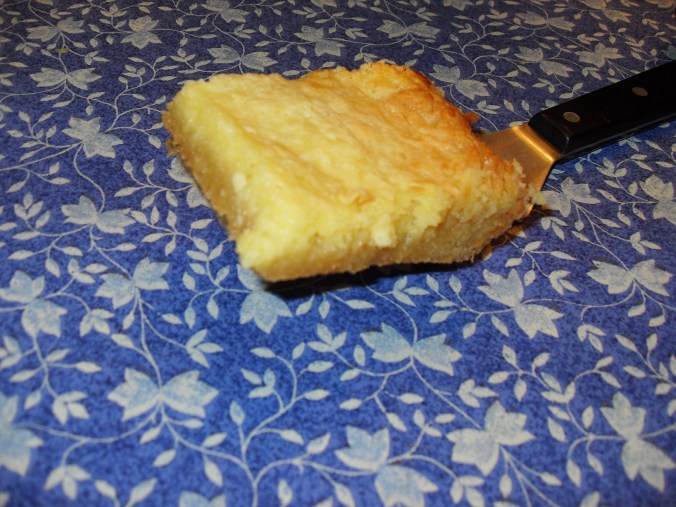
Eat outside. It makes an everyday meal more fun. Image: CC by 2.0 Rolands Lakis
You want the little darlings to eat what’s good for them — and like it. You know power plays, bribes, and other control efforts don’t lead to healthful eating habits in the long run. So what’s a parent to do? Here are some gentle yet effective tactics.
Shrink It
Kids enjoy scaled down versions of everyday objects. Maybe it lets them feel larger or maybe such things are easier to use. Every now and then, let your children eat from tiny dishes. No need for a tea set; you probably have the perfect sizes in your cupboard. Use the smallest appetizer plate for a dinner plate, a ramekin for soup or cereal, and a shot glass or other tiny vessel for a beverage. Baby forks and spoons are already miniature utensils. Smaller dish sizes automatically scale down portion size, meaning kids might actually have room for tiny second and third helpings. Encourage kids to serve themselves. They can refill glasses using a tiny pitcher, creamer, or even a small measuring cup with a spout. I know teenagers who still think that eating with tiny dishes is a hoot.
Focus on companionship

Togetherness is as important as taste. Make that more important! (CC by 2.0, Mark)
When eating is about companionship, it builds positive associations between healthy food and togetherness. Relaxed conversation also de-emphasizes who eats how much of what. Kids who eat family meals regularly tend to have better dietary behavior as teens. And family discussions also boost brainpower.
Make fruits and vegetables the first course

Put produce on the table while you make dinner. It chases away the hungries in a healthy way.
This is one way to take advantage of hunger to develop lean eating habits. Fruits and vegetables are brimming with nutrients but low in calories, so a first course of produce makes sense. Plus, studies show that snacking this way spurs kids to eat more veggies during the meal as well. Simply put different fruits and vegetables on the table while you’re cooking, after sports practice, or whenever appetite hits. Liven it up on occasion with a variety of kid-friendly dips and spreads.
Make faces
Paint distinctive “face” plates with a simple outline of eyes, nose, and mouth. You can do this at one of those decorate-your-own pottery places or paint them at home as Second Street does. If you’d rather buy them ready-made, purchase a face plate like Fred and Friends Food Face or one from the ThoughtfulTot Etsy shop. Face plates let kids arrange a different visage at each meal: maybe spaghetti hair with a green-bean mouth at dinner tonight, then a tortilla beard sporting black-bean lips and salsa eyebrows at lunch tomorrow.
Accept help in the kitchen, garden, and market
Better yet, expect help. Whether your child is a toddler or a teen, hands-on responsibilities increase maturity and builds skills they’ll need throughout life. Let your mutual interest in great taste (and a speedy dinner) translate into enjoyable time together. You know that stage when two-year-olds beg to help with whatever you’re doing? That’s the time to start saying yes. The younger you let kids help, the better. It won’t be long before you’ll have kids who are fully capable of making dinner for YOU.
Eat like a monster

Or a vampire. Or a zombie. (CC by 2.0 rhobinn)
There’s nothing wrong with pretzel-stick fences over cheese slice sunsets or broccoli trees sprouting from mashed-potato landscapes, as long as the kids are the ones who create and then cheerfully devour the scenery. It’s also fun to chow down adorable meals like those shown in such books as Bean Appetit: Hip and Healthy Ways to Have Fun with Food, Tiny Food Party! , and Funny Food: 365 Fun, Healthy, Silly, Creative Breakfasts
, and Funny Food: 365 Fun, Healthy, Silly, Creative Breakfasts . Remember, you won’t have to say, “What do you mean you’re not eating your dinosaur pancake!” if you make sure kids have had a hand making it. Use books like these as a starting point for inspiration. And don’t forget to make monster noises as you bite the nose off an elephant-shaped sandwich.
. Remember, you won’t have to say, “What do you mean you’re not eating your dinosaur pancake!” if you make sure kids have had a hand making it. Use books like these as a starting point for inspiration. And don’t forget to make monster noises as you bite the nose off an elephant-shaped sandwich.
Try muffin-tin meals

Healthy little bites for a fun meal. (CC by 2.0 Melissa)
This worked wonders for my four kids when they were small. We called them Super Snacks. Each child got a six-cup muffin tin. We filled the six openings with different offerings in small amounts. The compartments kept each food item from the sin of touching another food, and the concept was novel enough that my kids were more willing to try something new. Back then, I thought I’d made up the muffin-tin meal concept, but it turns out lots of parents do the same thing. Well, not quite the same; they’re much more clever. Check out Muffin Tin Mondays.
Grow it

Gardening grows kids who like fresh food. (CC by 2.0 NCVO London)
If you have the space for garden or there’s nearby community garden, put your child in charge of at least one planting. A child is much more likely to eat a homegrown crop, especially after tucking peas in the ground and watching the seedlings emerge, grow, and flower. And peas, like many freshly harvested plants, are particularly tasty eaten right as they’re plucked from the vine, still warm from the sun. To avoid the misery of weeding, you might want to use a natural weed barrier method to keep them to a minimum. There are plenty of ways to garden if you don’t have access to a bit of dirt. Start a jar of sprouts on the counter. Try container gardening, such as a pot of peppers on the balcony or a window planter of basil. You might even try an upside-down planter, or geek out by creating a vertical window garden on your own. For more ideas, check out books like Roots, Shoots, Buckets & Boots: Gardening Together with Children and Kids’ Container Gardening: Year-Round Projects for Inside and Out.
Get closer to your food origins

Make bread as your ancestors did.
Try making cheese, butter, bread, and other staples from scratch. Go to pick-your-own farms. Your kids will be eager to dig into baskets of blueberries and bags of apples for a taste, but they’re just as likely to be eager to try radishes, endive, broccoli, pecans, and other treats they pick themselves. Join a CSA that encourages members to donate time on the farm. Explore your own ethnicity through food by reconnecting with the recipes, stories, and heritage that are part of your background. (Try asking grandparents and great-grandparents for their food memories. And their recipes!) Your enthusiasm can spark the same in your kids.
Make eating new, unusual, or typically kid-scorned foods a privilege

Enjoy your food with gusto, but don’t coerce kids into trying a bite.
Rather than family policies such as “Try just three bites” or “Clean your plate,” you avoid the pressure of overt encouragement. You might say, “Would you like to try it?” rather than automatically giving a serving. You might wait until your child asks for a bite of what the adults are eating. I found it powerful to imply that the dish is something the child is more likely to enjoy when older. Any of these tactics puts the emphasis on the pleasure found in unfamiliar foods. You can’t enforce taste.
Look forward to cooking

Bite right into the heart of a heart-shaped pizza. (CC by 2.0 woodleywonderworks)
Talk about foods you want to try. Watch food shows together. Develop an archive of cooking videos that inspire you. Heck, consider filming your own cooking videos. Page through food magazines together to find recipes you’d both like to try. Regularly use cookbooks aimed at young cooks, such as Mom and Me Cookbook,
Southern Living: Kids Cookbook, and Mollie Katzen’s Salad People and More Real Recipes.
Take it outside

Breakfast tastes better on the porch. (CC by 2.0 David Goehring)
A meal or snack is instantly more delightful when you take it outside. Sit on the front steps or under a tree with your plate. Pack an impromptu picnic and take it to the park. Wrap up in snowsuits to drink cocoa out of a thermos. You might even, as my Eastern European friends do, wait until a bright winter day to take a hike and cook dinner over a fire.
Ramp up the entertainment value with friends

Yes, it’s quite possible your kids will be more adept in the kitchen than you. (CC by 2.0 Coqui the Chef)
If your kids are young, offer a simple cooking class for your children and their friends in your own kitchen. If your kids are teens, let them sign up together for a class at a cooking school to learn pastry techniques or the secrets of French cuisine. Encourage kids of any age to start a regular cooking club. It’s a great way for them to socialize while creating menus, and shopping lists, and then cooking the dishes they’ve chosen. Let them build on their interests. They may want to devote one session to making foods mentioned in a favorite movie and the next session to making bento-box lunches.
When your kids regard cooking, baking, and food experimentation as great ways to spend time, they’re well on their way to understanding the allure of good food.
An earlier version of this article appeared on Wired.com































